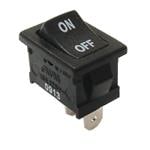 Blog
Blog
Accelerate the deployment of reliable, cost-effective and flexible virtual CPE
If you’re working on the deployment of virtual CPE solutions, you’ll want to check out the recently-published whitepaper Wind River and Intel Join Forces on Reference Design for Virtual Business Customer Premises Equipment. The paper describes the reference platform developed by Wind River in collaboration with members of the Intel Network Builders and Wind River Titanium Cloud ecosystems.
Demonstration of precision time protocol in VxWorks
An industrial system can consist of hundreds of sensors, motors and controllers. When the physical infrastructure connecting them together is an Ethernet network, it takes special handling to make sure that sensor data and control commands reach their destinations in the network within a hard time limit, often within 1 or 2µs.
A rising tide – addressing the demand for waterproof smartphones
A Redux poll of 1,000 UK consumers shows that one of the most sought-after features by young people is waterproofing. The poll showed that 64% of 18–24 year olds claim waterproofing would be useful. In fact, demand for waterproofed devices rose consistently and linearly the younger the respondent. Redux CEO John Kavanagh explains.
IoT and the four reasons why licensed spectrum technologies have been worth the wait
Several wireless technologies have emerged to enable the huge array of IoT applications that are set to explode. And while there are many differences between them, they can roughly be separated into two discrete groups: proprietary solutions operating in an unlicensed spectrum and those operating in a licensed spectrum. Here we take a quick look at these and examine some of the key reasons why it is worth waiting for licensed spectrum standards.
Voice interfaces to unlock the potential of speech recognition
Voice interfaces are often called conversational interfaces for good reason - they allow users to talk to an embedded device instead of using touch screens and buttons to execute a command. Conversations take place between two or more people who may be next to each other but are often a couple or more metres apart.
Life inside the IoT
The world is set to become much smarter over the coming five years. By 2020, some 50 billion electronic devices will be connected to the internet, according to networking specialist Cisco. They will support an estimated $14tr market for distributed intelligence that set to improve not just manufacturing and service efficiency but the quality of life itself. Digi-key explain the impact of the IoT on a variety of industry sectors.
Freedom of Expression
Freedom of expression vs. the black holes of the internet.
The future of solar power: what this could mean for small businesses
Whilst less than 2% of the world’s electricity is currently generated through solar photovoltaic technology, a recent report estimated that this figure could increase to as much as 13% by the year 2030. Phil Foster, Managing Director of Love Energy Savings has shared his thoughts on the future of solar power and what this may mean for small businesses.
Linux containers: where enterprise meets embedded operating environments
As more and more IoT services are being pushed to the edge of the network or onto smaller devices, the need of flexible, connected platforms is on the rise. Exciting open source technologies are brought forth to fill in the gap between embedded and enterprise platforms to service IoT needs and containerisation is an up-and-coming area for all manufacturers and service providers.
The Internet of Things that really matter
Early examples of the “potential” of the Internet of Things (IoT) patently failed to inspire enthusiasm worthy of (what has been rightly termed) the fourth industrial revolution. Prefixing everyday items with “smart” quickly became ubiquitous, with “smart” toasters and kettles negating the apparently now unacceptable effort of journeying far into one’s kitchen and manually flicking a switch.







